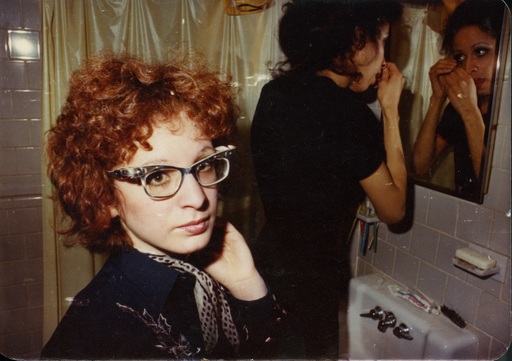All the Beauty and the Bloodshed: Interview with Laura Poitras
Laura Poitras's extraordinary documentary All the Beauty and the Bloodshed explores the multifaceted life of artist Nan Goldin. She tells us how she wanted to make a film that wasn't a biopic and that would implicate her audience
To watch All the Beauty and the Bloodshed is to witness decades of intentional, institutional harm. Laura Poitras’s documentary threads the life of underground photographer Nan Goldin through New York’s queer scene, the AIDS epidemic and a contemporary battle against big pharma’s role in the opioid crisis. “In the United States, especially, we have this sort of historical amnesia,” Poitras explains. “So it was really important that we were going to draw this connection between the AIDS crisis and the contemporary overdose crisis. Partly because Nan lived through and survived both, but also to have the immediacy around how the most vulnerable are destroyed by society.”
Immediacy is key to Poitras’s film; never has cinematic archiving felt more like an exercise in emotional extraction from not just its incredible subject but the viewer. All the Beauty and the Bloodshed drags a deep, inexpressible pain from its audience as they see the unravelling of repressed history. It’s the only way to honour Goldin’s work, Poitras believes: “Her artwork, just in general, has this kind of rawness in the work and what she speaks about, an emotional rawness that I think most people don't share as much as she does.”
The presence of these separate (but, of course, not that separate) societal traumas still dominates the lives of so many, and All the Beauty and the Bloodshed has such a devastating impact not solely because of its limitless empathy for those who suffered. “What I don't want is that people walk away from a film and feel like, ‘Oh, that's all wrapped up, I'm off the hook,’” says Poitras. “I really do want the audience to be implicated in the films. I mean, it's a battle because we are storytellers, right? We're like, ‘I have an audience and I have you for two hours and I don't want to lose you.’ But also it's important to remember that things aren't fixed, that the past is messy, that we tend to maybe simplify as we tell our past.”
This is reflected in the documentary’s form. Half of it records the activism from Goldin’s organisation P.A.I.N. (Prescription Addiction Intervention Now) and the protests they carry out in art institutions to which the Sacklers have donated, where their names are etched and engraved to engineer a prestige that their rigging of OxyContin in America completely contradicts. The other half is Goldin’s history – her relationship with her family, the queer community, sex, and art – as shown through her own work, her photos shown in sequence with the photographer’s voiceover narration.

All the Beauty and the Bloodshed
Poitras spent years interviewing Goldin, and while the majority of these conversations will forever remain private, the filmmaker found parallels between her methods and Goldin’s. “She said many times that she takes photographs to preserve history and memory, and to show the truth with a society that denies the truth, or a family that denies the truth, creating a record as a way of creating an archive of her experience,” Poitras explains. We get to see Goldin discussing her own art from a perspective that can be both vulnerable and distanced, a process that makes archiving deeply intimate.
Poitras is no stranger to intimate filmmaking. Her Oscar-winning doc CitizenFour, which recorded Edward Snowden’s whistleblowing testimony, largely unfolded in one Hong Kong hotel room with only a couple of other witnesses. “You can't get more intimate than somebody trusting you with their life,” Poitras reflects. “Like, literally, I'm putting my life in your hands and then having this meeting.” But the emotional powers of intimacy have never felt so necessary as they are here.
Together with editor Joe Bini, the wealth of available material was collated and refined into threads and chapters that facilitated the film’s seamless moving through time. Adamant she wasn’t making a biopic, Poitras and Bini found inventive ways to layer the emotional impact of Goldin’s stories – but you can tell how difficult a process this must have been. “It took a long, long time for it to actually flow, for it to move between the past and the present in a way that didn't leave the audience confused, wanting more, or feeling ripped away from something at the wrong time,” Poitras says.
Perhaps the most potent aspect of All the Beauty and the Bloodshed is an openness that extends beyond Goldin’s experience. Queer artist David Wojnarowicz, who died from AIDS in 1992, is remembered through recordings and memories that highlight the charged, mournful vantage points Goldin has held as an artist. “When you meet someone like David, his words… I don't know, they feel like they could change the world,” says Poitras. “And that's amazing, that one person, those words, his words, or Nan's photographs or Nan’s artwork, they have such power. Where do they come from? From a very pure place.” Poitras has shown true artistic power cannot only come from life’s beauty, but by showing its bloodshed too.
All the Beauty and the Bloodshed is released 27 Jan by Altitude
